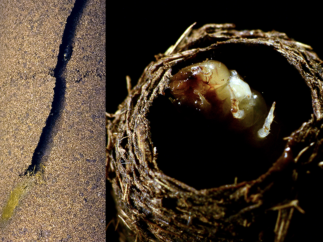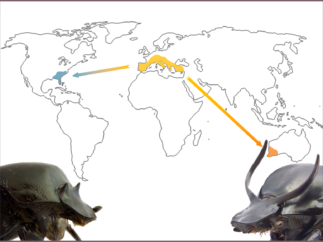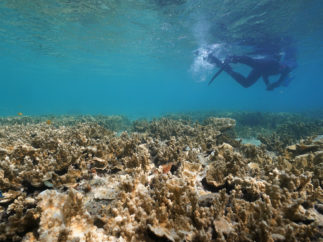di Anna LM Macagno, Eduardo E Zattara, Armin P Moczek & Cris C Ledón-Rettig
Plastizität im Verhalten und der Entwicklung ermöglicht es Mistkäfern mit stressvollen Temperaturen umzugehen, sowohl innerhalb einer Generation als auch darüber hinaus
von Anna LM Macagno, Eduardo E Zattara, Armin P Moczek & Cris C Ledón-Rettig
La plasticidad de comportamiento y desarrollo de los escarabajos estercoleros les permite sobrellevar el estrés térmico a través de las generaciones
por Anna LM Macagno, Eduardo E Zattara, Armin P Moczek & Cris C Ledón-Rettig
Behavioral and developmental plasticity enable dung beetles to cope with temperature stress within and across generations
While the climate is changing in complex patterns around our planet, there is strong consensus that global average temperatures are rapidly on the rise. Global climate change forces organisms to either cope with changing temperature regimes in their native habitats, or to face extinction. Furthermore, the resulting environmental changes can cause many areas to become suitable for non-native species, and the arrival of invading species can have significant impact on the already struggling natives. Successful establishment of alien species, which can drastically alter biodiversity, depends in part on the ability of each species to cope with new thermal environments. Therefore, determining if and how organisms can adapt to changes in temperature is critical to forecast the impact on populations of a globally changing climate, as well as to predict the risk and potential outcomes of biological invasions.
Microbial Eco-Evolutionary Dynamics
22-24 October 2018

Rapid evolution and phenotypic plasticity: insights from horned beetles
All organisms face the challenge of having to cope with variable environments. Diverse factors, from food and water availability to temperature, predation pressures, or conspecific densities, may impact an organism’s development, survival, and reproduction. Phenotypic plasticity is one mechanism that allows individuals to cope with variable environmental conditions within their life time, and most organisms therefore exhibit some form of phenotypic plasticity at least at some point during their development in one or more traits.
Coral reefs and niche construction: quantifying patterns
Coral reefs are one of the most biodiverse and threatened ecosystems in the world. Scleractinian corals act as ecosystem engineers and build the three-dimensional framework that provides shelter and food for themselves and all the other species that inhabit the reef. They are characterised by high diversity in terms of species, growth forms and demographic rates, harbouring one third of known marine fish species in less than 1% of the oceans’ surface.1
“Here I Go Again”—will Waddington’s hopes finally be fulfilled? Part II
Question 2: How did biologists attempt to mend the split between development and inheritance in the past?






